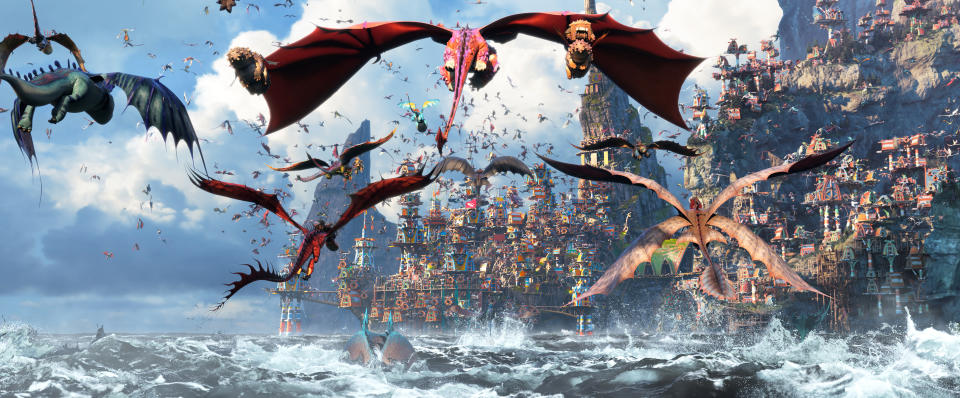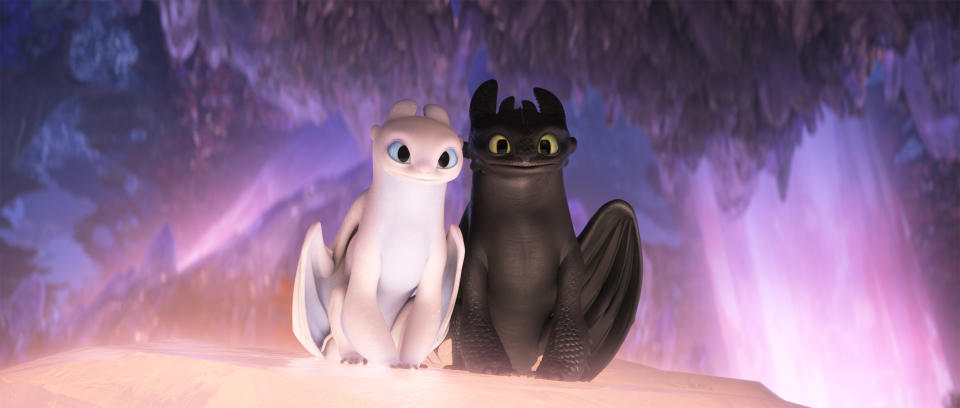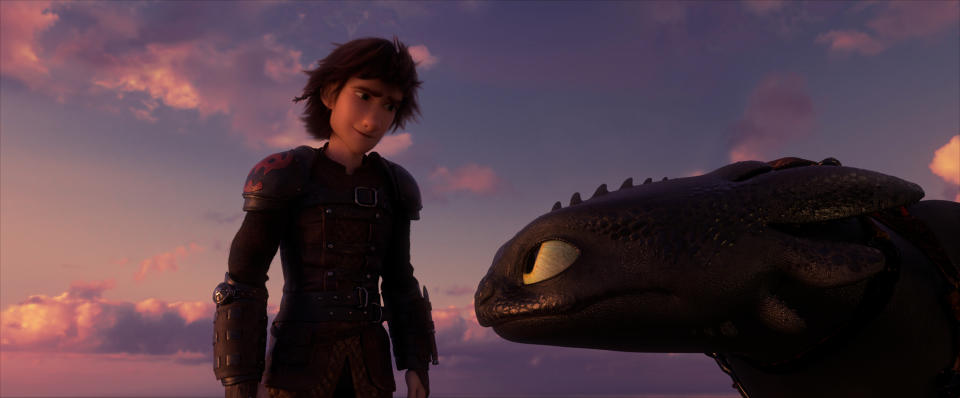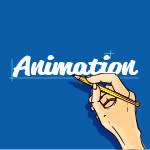‘How to Train Your Dragon: The Hidden World’: Confronting the Politics of Hate

Dean DeBlois always knew how he wanted to end his “How to Train Your Dragon” trilogy, with a grownup Hiccup (Jay Baruchel) uttering author Cressida Cowell’s mysterious line, “There were dragons when I was a boy.” But getting there required a painful narrative course correction in explaining why humans and dragons could no longer peacefully co-exist.
Still, the end result in exploring the different paths to leadership for the Viking ruler and his faithful dragon pal, Toothless, concludes the DreamWorks franchise on a stirringly emotional note. In addition, “The Hidden World” displays a richness and beauty unmatched at the studio, making it an Oscar contender next season.
Related stories
John Lasseter Lands a New Job at Skydance, But At What Cost?
'How to Train Your Dragon: The Hidden World' Review: A Visually Arresting Conclusion
Pixar and DreamWorks Lead Oscar Shortlist for Animated Short

“How to Train Your Dragon: The Hidden World”
Read More: ‘How to Train Your Dragon: The Hidden World’ Review: A Visually Arresting Conclusion
“After several drafts of being quite loyal to the continuity of the first and second films, I set it aside and decided what threads I must keep alive and how much new could I bring to it,” DeBlois said. I rewrote it completely from scratch, jettisoned Drago [Djimon Hounsou], in favor of a successor in his ranks, Grimmel [F. Murray Abraham], and he was the new villain of the film.”
This, after former DreamWorks chief Jeffrey Katzenberg warned the director that he was flirting with commercial disaster if he didn’t inject fresh ideas, and after Steven Spielberg advised that he was biting off more than he could chew in pursuing a redemptive arc for Drago.
Like Hiccup, though, DeBlois finished his journey with a greater sense of awareness and satisfaction. At the same time, he made his movie even more relevant by tapping into Trump and the politics of hate with the ruthless dragon hunter, Grimmel.

“How to Train Your Dragon: The Hidden World”
“It’s a philosophy that’s diametrically opposed to Hiccup and he becomes curious about Hiccup and tries to teach him a lesson by crushing his blossoming utopia,” said DeBlois. “I was looking at introducing a villain that would most threaten Hiccup at a personal level. But you take a step back and in some ways it does reflect our times: Grimmel could very much be a character in politics. He wants to eradicate the dragons to save humanity.
“But what I didn’t realize in completing the trilogy and explaining why dragons aren’t here anymore was taking Hiccup’s goal to promote peace and co-existence and [turn it on its head].”
And while Hiccup completed his journey of self-discovery, Toothless experienced his own with the introduction of Light Fury, an ebony and ivory love story. “I wanted her to be untainted by human domestication and lead Toothless back to their ancestral home,” added DeBlois.

“How to Train Your Dragon: The Hidden World”
But it was only because of the tech advancements at DreamWorks that allowed such an aesthetically opulent depiction of the Hidden World along with more detailed and tactile surfacing for every facet of the animation. “We were finally able to make use of these front end tools, “DeBlois said. “The animation software [the Academy Sci-Tech award-winning Premo], in particular, to their fullest extent.
“Some of these shots are really epic with the number of characters on screen, and previously it would’ve been impossible to do because the rendering time on the back end wasn’t feasible. We were the first film in the pipeline to take on the earliest generation of Moonray, a path tracer that actually calculates light as it behaves in the real world. This allows for the most subtle and beautiful lighting possibilities.”
Once again, Oscar-winning DP Roger Deakins served as visual consultant, but on “The Hidden World” the naturalism was more like cinematography than painting, without the need for cheating, and they were able to achieve bolder lighting choices. “Every sequence had its own look as far as atmosphere and palette,” DeBlois said.

“How to Train Your Dragon: The Hidden World”
And it all came together magnificently in the creation of The Hidden World, the otherworldly dragon oasis. After exploring volcanic caves in the first film and a greenhouse-like arctic in the second, DeBlois, production designer Pierre-Olivier Vincent, and VFX supervisor Dave Walvoord conjured “the sense of a world that interconnected through tunnels and chambers and spread its fingers across the globe,” the director said.
“We used bioluminescence and phosphorescence for an ethereal look, that even patterns on the dragons would reveal,” DeBlois said. “We had water spilling into the world that’s so steamy that coral could grow. And there was a third chamber where we could have crystal carrying light from magma sources for a warm glow to push into the fantasy possibilities.”
And the possibilities of animation achieving storytelling parity with live-action was always on DeBlois’s mind throughout the trilogy. “None of us on the crew of 400 people are making a movie for kids,” he said. “We’re all making a film we want to see in this particular medium, filled with elements that we’d hoped to see when paying to go to the theater. We hope that eventually it can stop being a restrictive medium for folks.”


